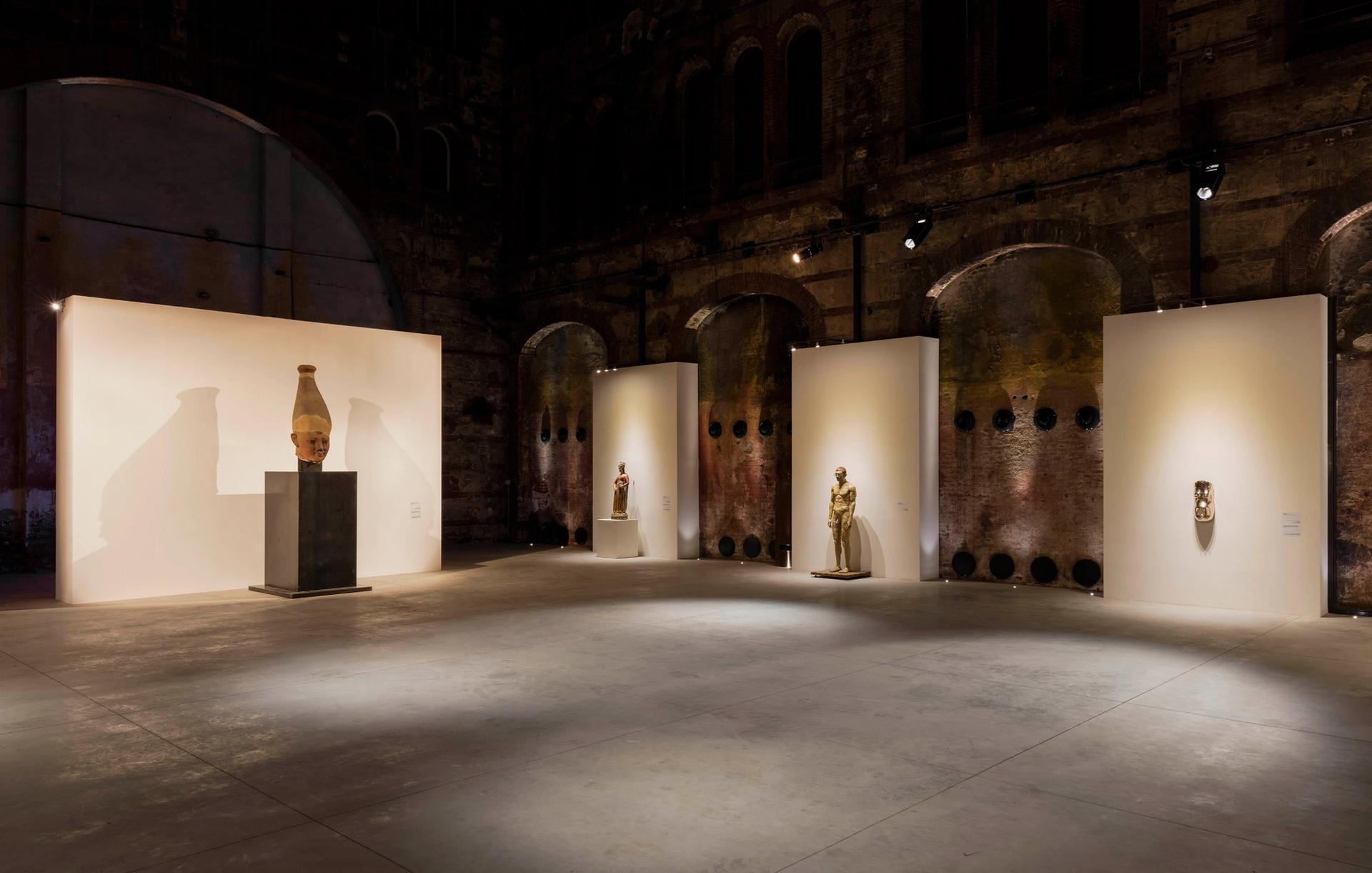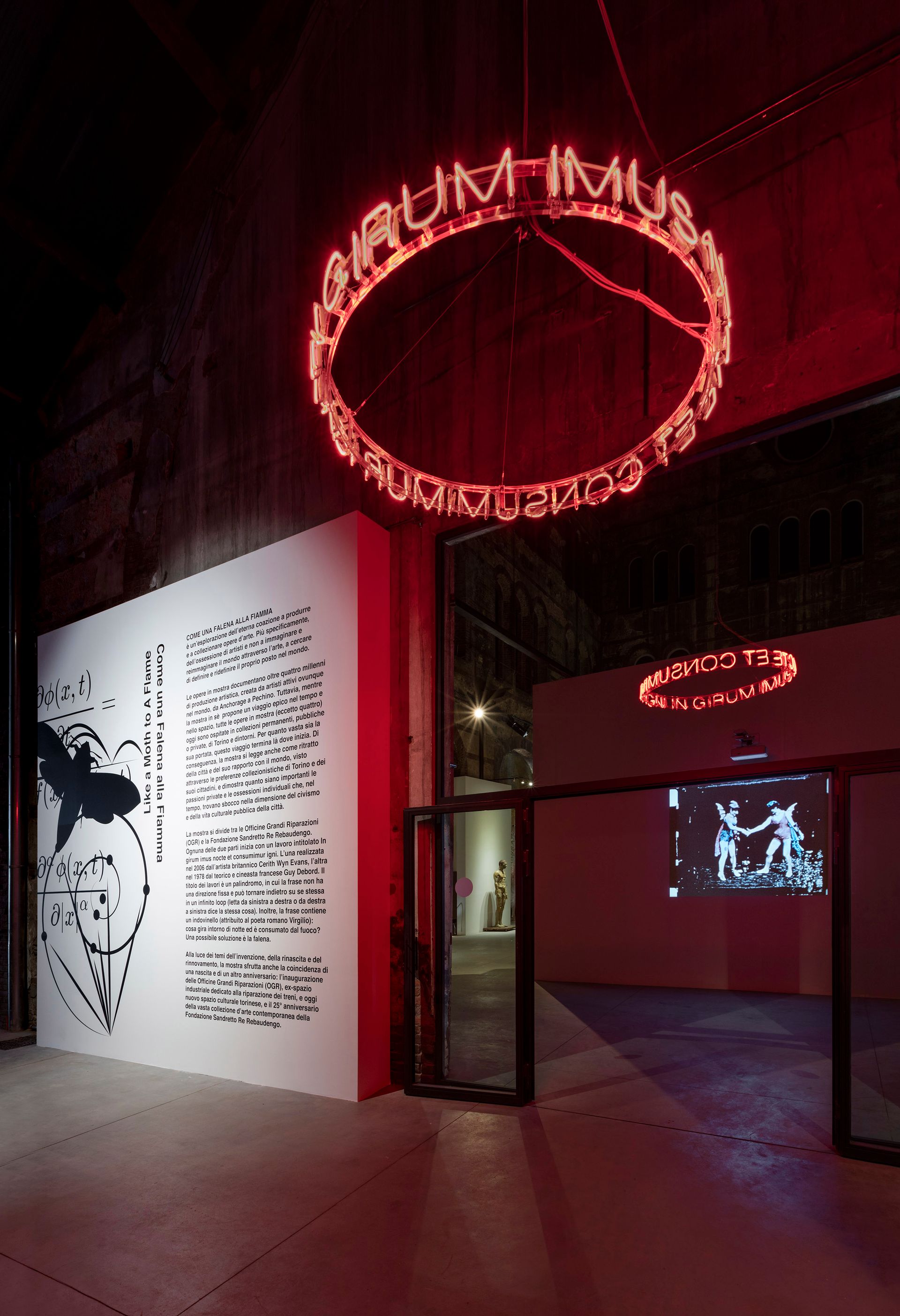The first exhibition at Turin’s vast new arts centre, the Officine Grandi Riparazioni (OGR), both celebrates the city’s long collecting tradition and reflects on the rampant production of a contemporary art world obsessed by the new.
Like a Moth to a Flame (which opened during Artissima week and runs until 15 January) is split across the OGR and the Fondazione Sandretto Re Rebaudengo. It is curated by Tom Eccles, the director of the Center for Curatorial Studies at the Bard College of New York, Mark Rappolt, the chief editor of Art Review, and the British artist Liam Gillick. Alongside around 70 contemporary works, largely drawn from the Fondazione Sandretto Re Rebaudengo and the Collection of Fondazione per l’arte moderna e contemporanea CRT, the trio also delved into the holdings of public museums such as the Egyptian Museum, the Palazzo Madama – Museo Civico d’Arte Antica, the Museum of Oriental Art (MAO), the Modern Art Gallery (GAM) and the Castello di Rivoli.
The title of the exhibition, a comment on the urge to collect, is taken from a circular neon work by Cerith Wyn Evans, In girum imus nocte et consumimur igni (2006), hanging above the entrance to the OGR show. The answer to the riddle it posits (what “goes around at night and is consumed by flames?”) is presumed to be a moth.
Nicola Ricciardi, the OGR’s artistic director, says: “From Ancient Egypt via the medieval era to the age of globalisation, Like a Moth to a Flame aims to build up a snapshot of the city of Turin using the objects that the city and its residents have collected.”
Eccles and Rappolt were initially invited by Patrizia Re Rebaudengo to organise a show celebrating the 25th anniversary of her foundation and then asked to curate the OGR’s inaugural exhibition, so “it seemed adventurous to bring the two proposals together,” Eccles says.

Andrea Rossetti. Courtesy OGR – Officine Grandi Riparazioni, Torino
The cavernous OGR, a former train repairs workshop, is reminiscent of Venice’s Arsenale. A challenging space, but Eccles says: “Bringing Liam Gillick in as a collaborator on the exhibition design gave us the forms with which we could address the space and the works allowing for both the building to be exposed while the works could be seen.”
An ancient Egyptian statue of the sun deity Sekhmet, borrowed from the Egyptian Museum, forms an anchor. “The Sekhmets are a symbol of the Egyptian Museum in Turin–one which every child and adult in the city is familiar", Eccles says, “We liked the idea of something very real in the show, giving gravity and presence. Directly opposite Thomas Ruff's sky at night with sparkling stars [Sterne Bild, 1990] and across an expanse of Gianni Colombo's uncertain landscape [Bariestesia, 1974-75], Sekhmet seemed the perfect cap to the exhibition.”

Andrea Rossetti. Courtesy OGR – Officine Grandi Riparazioni, Torino
The show’s two halves differ in tone, Eccles adds, as the OGR portion "is more about material culture, how life is represented over time, and Sandretto is more political.” The trend for cross-period shows continues unabated, but why? “I think it is a reaction to the overload of contemporary art and over production," Eccles says, "a stopping and saying ‘what is it we are doing, what is it we are looking at, where do we stand in relation to time and space?’ I hope our show does that.”
Rappolt adds it is also a comment on contemporary art’s obsession with novelty: “As we know from science, mathematics and philosophy, nothing comes from nothing: there isn’t anything that is absolutely new…art constantly seeks to define what is new about a particular age, from celebrating a new incarnation of the Buddha to the effects of the internet.”
Next year, OGR’s programme includes exhibitions from Tino Sehgal (curated by Luca Cerizza, 2 February–11 March), Susan Hiller (curated by Barbara Casavecchia, 23 March-June) and Mike Nelson (November 2018-January 2019).


